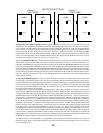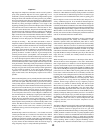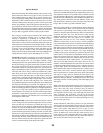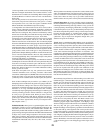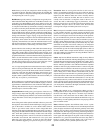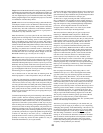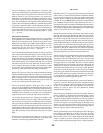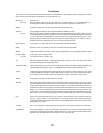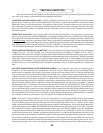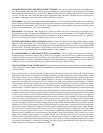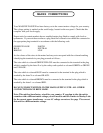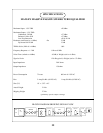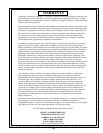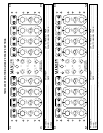
There are a number of possible symptoms of something not quite right, some may be interfacing, others we will touch
on as well. If you suspect a problem the following paragraphs should help.
NO POWER, NO INDICATORS, NADA - Probably something to do with AC power. Is it plugged in? Check the fuseon
the back panel. A blown fuse often looks blackened inside or the little wire inside looks broken or it's resistance measures
higher than 2 ohms. A very blackened fuse is a big hint that a short occured. Try replacing the fuse with a good one of the
same value and size. If it blows too, then prepare to send the unit back to the dealer or factory for repair. The fuse is a protection
device and it should blow if there is a problem. If the unit works with a new fuse, fine, it works. Sometimes fuses just blow
for unknown reasons.
LIGHTS BUT NO SOUND - First try plugging the in and out cables into each other or some other piece of gear to verify
that your wires are OK. If not fix them or replace them. Assuming that cables passed sound - it probably is still a wiring thing.
The output XLRs are transformer balanced which require both PIN 2 and PIN 3 to be connected somewhere. When driving
an unbalanced input ( inserts on some consoles) PIN 3 needs to be grounded or connected to PIN 1. Same with the unbalanced
1/4 inch jacks - if driving a balanced input you can't ignore the negative side. It needs to be connected to the sleeve of the phone
plug. Another way to do basically the same thing is join PIN 1 and PIN 3 on the XLR male at the destination. Easiest way
- Use the balanced with balanced, unbalanced with unbalanced. That is why the options are there.
LEVELS SEEM TO BE WRONG, NO BOTTOM - Several possible scenarios. Manley uses the professional standard of
+4 dBm = Zero VU = 1.23 volts AC RMS. A lot of semi-pro gear uses the hi-fi reference of -10 dBm = Zero VU. This is a
14 dB difference that will certainly look goofy and may tend to distort. Often there are switches on the semi-pro gear to choose
the pro reference level. If the loss looks close to 6 dB and it sounds thin then one half of the signal is lost. The cause is probably
wiring again. One of the two signal carrying wires (the third is ground / shield on pin 1) is not happening. Check the cables
carefully because occasionally a cable gets modified to work with a certain unit and it seems to work but its wrong in other
situations. If only one side of the Massive Passive exhibits this problem, it may be a problem in the Massivo. See the next
item.
ONE SIDE WORKS FINE BUT THE OTHER SIDE IS DEAD - Let's assume this is not wiring. We are pretty sure it is
the Massivo. If it were solid state you would generally send it back for repair. Being a tube unit, you can probably find the
problem and fix it yourself in a few minutes. Not too many years ago, even your parents could "fix" their own stuff by taking
a bag of tubes down to the corner and checking the tubes on a tube tester - but these testers are hard to find today. A visual
inspection can usually spot a bad tube just as well. Be careful - there are some high voltages inside the chassis and tubes can
get pretty warm, but if you can replace a light bulb you should be able to cruise through this. Before you remove a tube, just
take a look at them powered up. They should glow a bit and they should be warm. If one is not, you have already found the
problem. The tube's filament (heater) is burnt out or broken like a dead light bulb. The other big visual symptom is a tube that
has turned milky white - that indicates air has gotten into the tube or we've joked "the vacuum leaked out". Either way replace
the tube. Manley can ship you a tested one for a reasonable price. Before you pull a tube, pull the power out, let the unit sit
and cool and discharge for a minute or two, then swap the new tube in, then power, then check. Gentle with those tubes, don't
bend the pins by trying to insert the tube not quite right. A little rocking of them as you pull them out or put them in helps.
The two taller tubes are the same so you can swap them. If the problem follows the tube you found the problem - a bad tube.
No soldering, no meters, one screwdriver - easy. See page 17 for a diagram of tube locations.
HUM - Once again - several possibilities - several cures. Most likely it is a ground loop. Ideally each piece of gear should
have one ground connection and only one. However, the short list of grounds include the AC mains plug, the chassis bolted
to a rack with other gear, each input and each output. The two most common procedures are: try a 3 pin to 2 pin AC adapter
(about a dollar at the hardware store).This while legal in many countries can be dangerous- We went one better; Method two
- On the back panel loosen the GROUND TERMINALS and slide the small metal ground strap to one side. This is way better
than "method one" because it is safer and removes another possible source - the chassis grounding via the rack. Method three
- cutting the shield on oneend of each cable. This is done by some studios at every female XLR to "break" all ground loops.
All the other gear in the rack is "dumping" ground noise onto the ground. Try removing the EQ from the rack so that it is not
touching any metal. You just may have cured a non-loop hum. Some gear radiates a magnetic field and some gear (especially
if it has audio transformers or inductors) might receive that hum. A little distance was all it took. The Massive Passive is full
of inductors and audio transformers which have the potential of hum pick-up from other units however they are run "hot" to
minimise this possibility. It is worth a few placement experiments if you notice hum especially in EQ mode (not bypass).
TROUBLE-SHOOTING
26



